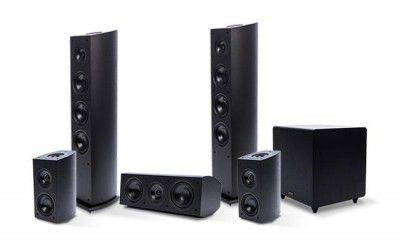DOLBY ATMOS: the cool new kid in town
Dolby Atoms is the new addition to the AV world. Experiencing the surround sound from this amazing setup is something magical to a layman. The whole new addition to the .1 (point one) concept which made this stand out from the others were the pair of speakers mounted on the ceiling or the upward firing speaker units(optional). But for a audio professional this opens up a whole new platform, by moving sound in a three dimensional form instead of just panning them around the front and rear speakers. It is achieved by a object-based processing. This allows engineers to explore and deliver the best theatrical experience ever. Dolby Atmos is definitely a useful tool to a content creator.
 |
| Pioneer Elite Series (Upward firing speakers) |
Breaking it down
Dolby Atmos Setup:
Dolby Atmos is basically enabled by the new Atmos-equipped receivers that decode the content and delivers it to the speakers connected. This allows us to customise our setup from 5.1.2 to the current max 24.1.10 (Yep, that's 24 speakers, a subwoofer and 10 ceiling speakers.)
 |
| Atmos speaker setup in 5.1 and 24.1 |
Now, that’s a crazy setup which will cost a lot. Pioneer and Onkyo are offering such fairly priced, affordable Home Theatre in a Box (HTiB) as Atmos systems or as add-ons for your existing Home theatre setup.
Check out available systems:
Mixing in Dolby Atmos:
The basic approach in creating a Atmos mix are,
1. Mixing the existing stems
2. Premixing in Atmos
3. a Hybrid (combination of existing stems and the original source element)
Mostly existing 5.1 source material is used for this approach. These stems usually consist of dialogue, music and FX (a huge clip list of Bg’s, sound design and foley).
Here the most important decision is making the choice, differentiating the elements for a traditional channel-based pattern, from the elements which are being highlighted by turning them into audio objects.
According to several reports found online. Professionals prefer to do the premix in Atmos to have control of every element. But not every production has the luxury of doing the premix and the final mix on a Atmos stage. The premix is done in smaller rooms and edit suites with some plugins that help you to use the Atmos tools without the rendering and mastering unit hardware. The current VST supports unto 16 audio outputs used to mix in a Atmos configuration using 9.1 / 7.1 / 5.1 setup.
Finally when the mix is opened in a Atmos atmosphere, the mix reviles itself. Professionals prefer this workflow as the most effective and efficient way of working through the mix.
Many State-of-the-Art Sound technology companies have made these plugins. AURO-3D is on top of the list.
 |
| AURO-3D (Plugin Interface) |
Check out AURO Technologies: http://www.auro-3d.com
Even though I call this technology, the cool new kid in town. I would conclude by saying Dolby Atmos should evolve more; to offer the same experience to a home theatre audience, when considering the theatrical experience. I personally enjoy surround sound and was quite content with two excellent stereo speakers and a sub. Now I have a 5.1 and after doing all this research on Dolby Atmos, I’m seriously considering on getting a Atmos AV receiver and adding some speakers on the ceiling to get that rich surround sound effect.
- Roger Walker
Oct 12, 2015

No comments:
Post a Comment